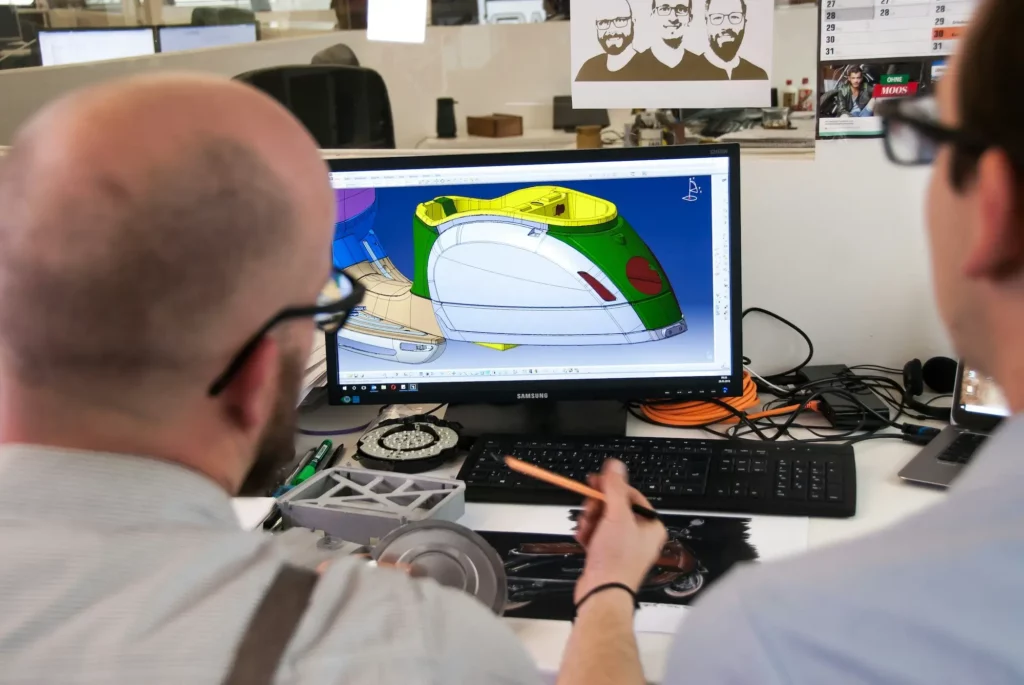Not every team works the same way. Some focus on product design, others on customer service or user research.
That’s why there’s no one-size-fits-all feedback tool. The best tools fit your workflow, help you collect clear input, and make it easy to act on what you learn.
In this article, we’ll walk through ten digital feedback tools that work well for different types of teams. Some are great for product design reviews, while others help with surveys, customer input, or real-time feedback during design.
What Are Digital Feedback Tools?
Digital feedback tools help teams collect input, suggestions, and ratings in a quick and easy way. The goal is simple: make feedback easy to give and easier to use.
Some digital feedback platforms offer AI-powered features. These use smart suggestions to sort feedback, spot patterns, or even write summaries. If you’re looking for advanced tools, you’ll find options that give deep reports and real-time alerts.
Many teams mix digital feedback tools with other tools they already use, like project boards or chat apps. This helps feedback flow smoothly without slowing things down.
Transform how your team reviews, approves, and delivers designs. Get CADchat today.
Types of Digital Feedback Tools
Digital feedback tools come in many forms. Each one helps with gathering feedback in a different way.
Design Review Software for CAD Collaboration
CAD design review tools help engineers and designers provide feedback on CAD files in real time. Users can leave comments directly on 2D or 3D models, making it easier to spot mistakes or suggest changes early in the process.
This speeds up decision-making and helps teams identify trends across projects. Many platforms also support version tracking and markup tools, making collaboration smoother.
Survey and Poll Tools
These tools let teams build surveys and create polls in minutes. Most offer feedback forms, pre-made templates, and easy sharing links.
You can track results instantly, and many tools include features such as Net Promoter Score, word clouds, and predictive analytics to turn responses into valuable insights. They’re great for testing ideas, learning from users, and improving products.
Website Feedback Tools
Website feedback tools let visitors share thoughts as they browse. These tools usually include pop-up forms, screenshots, and tagging options.
They help teams catch bugs, test design changes, and gather customer data while the experience is fresh. You can get immediate feedback, which helps teams move fast and fix issues before they grow.
In-App Feedback Tools
These tools collect thoughts from users without making them leave the app. They often include emojis, star ratings, or simple text forms. Teams use them to check how users feel in the moment, which can boost customer satisfaction.
They’re also useful for product updates, onboarding, or testing new features. Even other educators use them to see how learners respond in real time.
Top Digital Feedback Tools for CAD Collaboration
Working on CAD files often means going back and forth with teammates, clients, or other engineers.
To keep things clear and projects moving, you need tools that make it easy to review designs, leave comments, and track changes in one place.
These design feedback tools are built to support fast, clear communication during the design process. Below are five solid options that help teams work better together on CAD projects.
1. CADchat
CADchat is a cloud-based collaboration platform made for product teams working with CAD files. It helps designers, engineers, manufacturers, and non-technical stakeholders communicate clearly and make faster decisions.
With CADchat, teams can meet in real time or collaborate asynchronously in shared digital workspaces.
All files, feedback, and design changes stay in one place. This makes it easier to stay aligned, avoid confusion, and move projects forward faster.
Key Feature
- Live CAD model reviews – View and edit 3D models in real time without screen sharing or file conversions
- Async collaboration tools – Leave comments directly on CAD models so others can review and reply anytime
- Persistent digital workspaces – Keep all files, feedback, and decisions in one place for easy access
- Non-technical stakeholder access – Let anyone view models and give feedback, even without CAD software
- Instant manufacturability feedback – Solve DFM issues quickly with live input from machinists and suppliers
- Clear version control – Track all changes and work on the most up-to-date file without confusion
- CAD interoperability – Upload and collaborate using the file types your team already works with
- Faster design approvals – Speed up signoffs with clear communication and fewer back-and-forth messages
Keep your team aligned from the first sketch to the final sign-off. Start with CADchat today.
2. Colab Software
Source: colabsoftware.com
CoLab is a browser-based platform that supports engineering teams in conducting and organizing design reviews. It helps users capture feedback, identify patterns from past reviews, and automate certain tasks using AI.
CoLab is designed to reduce the risk of missed input and improve the consistency of design decisions.
Key Feature
- Browser-based CAD access – Allows team members to view and comment on CAD models without needing extra software
- Structured feedback capture – Saves review input with full design context in a searchable format
- AI-assisted review suggestions – Surfaces lessons from past reviews using model similarity and previous feedback
- Automated review checks – Uses generative AI to apply review checklists and generate comments
- PLM and CAD integrations – Connects with systems like Windchill and Teamcenter and supports over 30 CAD file types
3. Anark
Source: anark.com
Anark is a platform designed to improve access to engineering product data across teams. It combines content management, work tracking, and communication tools to help manufacturers collaborate using technical data.
By connecting with existing systems, Anark supports traceable collaboration and promotes the use of structured product data in design, production, and supplier workflows.
Key Feature
- Content management – Centralizes engineering data with tools for CAD publishing, PLM integration, and technical data packaging
- Work management – Allows teams to assign and track tasks alongside 3D models, drawings, and work instructions
- Unified collaboration tools – Supports real-time messaging and discussions directly tied to engineering content
- Knowledge capture and reuse – Enables creation and storage of visual work instructions based on model-based data
- Supplier and customer collaboration – Facilitates secure sharing of product data during early and ongoing collaboration
4. Autodesk Viewer
Source: viewer.autodesk.com
Autodesk Viewer is a browser-based tool that allows users to view and share 2D and 3D design files without installing additional software.
It supports a wide range of file formats and provides basic tools for collaboration, such as markup and commenting, across different devices and operating systems.
Key Feature
- Browser-based viewing – Opens design files without the need for software installation
- Multi-format support – Works with various file types, including DWG, STEP, DWF, RVT, and Solidworks
- Annotation tools – Includes markup features to collect and organize feedback
- Cross-device access – Allows users to view and comment on designs from any device or operating system
- File sharing capabilities – Enable easy sharing of design views for remote collaboration
5. eDrawings
Source: edrawingsviewer.com
eDrawings is a software tool used to view, share, and collaborate on 2D and 3D CAD designs. It supports communication across engineering, manufacturing, and non-technical teams by making CAD data accessible in a lightweight and shareable format.
The platform includes viewing tools, markup features, and support for multiple CAD systems, with additional options for AR/VR collaboration.
Key Feature
- 3D design viewing and markup – Allows users to view, measure, and comment on CAD models without needing full CAD software
- Support for multiCAD environments – Publishes files from various native CAD systems to streamline collaboration
- Augmented and virtual reality tools – Offer immersive review options using AR and VR to assess design context
- Lightweight file sharing – Enables efficient sharing of high-fidelity 3D models using compact file formats
- Cloud-based collaboration with SOLIDWORKS – Supports secure sharing and feedback collection directly from SOLIDWORKS using web tools
Share models, leave comments, and move projects forward. Start using CADchat.
Digital Tools for Collecting Customer Feedback
Getting input from customers helps you learn what they really think. Many platforms today let you create unlimited surveys, build engaging surveys with easy drag-and-drop tools, and share them anywhere.
Most are also mobile-friendly, so users can respond on the go. Below are three tools that make customer feedback easy to collect and use.
6. Zonka Feedback
Source: zonkafeedback.com
Zonka Feedback AI is a platform designed to analyze and organize customer feedback from multiple sources such as surveys, support tickets, chats, and online reviews. It uses AI to detect patterns, assess sentiment, and link feedback to performance metrics.
The platform supports both structured and unstructured data, helping teams identify areas of focus and manage the feedback process from insight to action.
Key Feature
- AI-driven feedback analysis – Processes high-volume input to identify patterns, sentiment, and customer themes
- Unified data view – Consolidates feedback from surveys, tickets, chats, and reviews into a central system
- Role-based dashboards – Present insights tailored to specific teams, including leadership, product, and frontline staff
- Automated workflows – Routes feedback, assigns cases, and triggers follow-ups based on urgency and theme
- Support for custom and targeted surveys – Collects specific feedback using flexible survey tools designed for different use cases
7. SurveyMonkey
Source: surveymonkey.com
SurveyMonkey is a web-based tool that helps individuals and organizations create custom surveys, collect responses, and analyze feedback.
It offers AI-powered features, pre-built templates, mobile-friendly surveys, and integrations with other platforms to support a range of use cases, including customer experience, employee engagement, market research, and event feedback.
Key Feature
- AI-assisted survey creation – Use prompts or templates to quickly create surveys and feedback surveys for different goals
- Audience targeting tools – Reach specific respondent groups with custom distribution methods or use a global response panel
- Feedback analysis and reporting – Identify patterns and insights from collected responses using visual dashboards and analytics
- App and platform integrations – Connect surveys to tools like Salesforce, HubSpot, Tableau, and Slack for streamlined workflows
- Form and registration templates – Build forms for events, applications, or sign-ups with options for data collection and export
8. Qualtrics
Source: qualtrics.com
Qualtrics is a platform used by organizations to manage and improve customer, employee, and market experiences. It uses AI to analyze feedback from multiple channels, identify trends, and provide actionable insights.
The platform supports teams across departments with tools for communication, response management, and performance tracking, while maintaining enterprise-grade security.
Key Feature
- AI-powered feedback analysis – Extracts insights from customer and employee conversations using sentiment and topic detection
- Role-based dashboards – Provide targeted information to leadership, managers, and frontline staff based on specific metrics and goals
- Multi-suite experience tools – Offers separate modules for customer experience, employee engagement, and market research
- Conversational response support – Helps teams respond to feedback through suggested replies and recommended actions
- Secure platform access – Offers free account options along with enterprise-grade security features for data privacy and compliance
Visual & Design‑Focused Feedback Tools
If your team is working on visuals or layouts, written notes aren’t always enough. You need tools that let people leave comments directly on images, mockups, or live designs.
These tools help teams spot design issues fast and share clear feedback without confusion. Here are two options made for visual and design-focused feedback.
9. Atarim
Source: atarim.io
Atarim is a web-based platform designed for visual collaboration and project management. It helps teams and clients communicate directly on design work by allowing feedback collection on live websites, graphics, and other visual content.
The platform includes tools for task tracking, approvals, and workflow automation, and integrates with various project management and communication tools.
Key Feature
- Visual commenting interface – Allows users to leave feedback by clicking directly on the website or design elements
- Centralized task management – Tracks tasks and approvals from one dashboard using features like Kanban boards
- Workflow automation tools – Automate routine steps such as notifications and task assignments to improve efficiency
- Client collaboration tools – Supports shared inboxes, forms, and approvals to streamline communication with external stakeholders
- Tool and platform integrations – Connects with apps like Jira, Slack, WordPress, and Figma to support existing workflows
10. InVision
Source: invision.webflow.io
InVision is a platform that supports design teams in prototyping, collaboration, and workflow management. It allows users to create interactive prototypes from design files, collect feedback directly on screens, and organize design tasks and assets in a shared workspace.
The platform includes tools for team communication, client presentation, and design-to-development handoff.
Key Feature
- Interactive prototyping tools – Turn static screens into clickable prototypes using gestures, animations, and transitions
- Centralized design feedback – Collect and manage comments from team members and stakeholders in one place
- Visual project management – Track screen status, manage design tasks, and preview project progress from a single dashboard
- Collaborative boards for ideation – Store and present visual ideas using flexible layout spaces with context and hierarchy
- Design to development handoff – Generate code, export assets, and share stylesheets to support development workflows
Why Should You Collect Feedback?
Feedback is a key part of building good products and strong teams. Below are a few reasons why collecting feedback should be part of your regular process.
Improve the Customer Experience
When you collect feedback, you learn what customers like, what they struggle with, and what they expect next. This helps you make changes that actually matter. You can fix pain points, improve features, and create smoother experiences.
Over time, this builds trust, reduces churn, and turns users into loyal supporters. Listening shows that you care, and that’s key to a great customer experience.
Strengthen the Engineering Design Review Process
For engineers, feedback is part of building better systems. During the engineering design review process, input from other team members helps catch design flaws or CAD issues before they become bigger problems.
Getting clear, real-time design feedback makes it easier to improve designs, stay on schedule, and reduce costly errors. It also brings the team together around shared goals.
Analyze Responses for a Complete Picture
Collecting feedback isn’t just about numbers. It’s about understanding the full story. When you analyze responses from different groups, you see patterns that one team alone might miss.
You can compare how different users feel, check if internal feedback matches customer input, and spot areas that need work. This gives you a complete picture of what’s happening, not just surface-level data.
Use Powerful Analysis to Guide Decisions
Modern feedback tools offer more than forms. They give you charts, filters, and trend reports that help you understand what users are saying at scale. This kind of powerful analysis helps you move from feedback to action.
You can make updates based on real needs, not guesses, and share clear data with your team or stakeholders to back up your choices.
Spot Market Trends and Gain a Competitive Edge
When you collect feedback often, you start to notice patterns over time. Users may ask for the same feature again and again. New pain points may pop up across industries.
These signs can point to market trends that are just starting. Acting on them quickly gives you a competitive edge.
Drive Business Growth
Feedback helps you build better products, keep users happy, and make smarter choices. That all adds up to growth. When you respond to feedback, you show users that their voice matters. This builds trust and loyalty.
Over time, happy customers bring in more users through word of mouth, better reviews, and stronger retention. In short, good feedback helps drive business growth.
Collaborate Across Teams Easily With CADchat
Ready to simplify your design reviews and improve your workflow? With CADchat, your team can collaborate directly on 3D models in the browser.
You can hold live meetings or leave feedback asynchronously, all while keeping everything organized in one place.
CADchat helps everyone stay involved, from engineers and manufacturers to non-technical stakeholders.
No extra software is needed. Team members can view models, leave clear feedback, and stay aligned throughout the design process.
FAQs About Digital Feedback Tools
What is the best feedback tool?
The best feedback tool really depends on what you’re looking for. If you’re focused on customer feedback, tools like Typeform or Google Forms help you create customizable surveys. For design collaboration, CADchat is a favorite tool for real-time feedback on CAD projects.
If you want a user-friendly platform that helps you collect data and unlock powerful insights, SurveyMonkey and Qualtrics are also solid picks.
What are the five R’s of feedback?
The five R’s of feedback are Recognize, Respond, Reflect, Reframe, and Revisit. These steps guide how we give and receive feedback in a helpful way.
They support a strong feedback loop, improve communication, and help people better understand both customer feedback and employee feedback.
When you follow these steps, you create space for timely feedback, capture feedback clearly, and turn even negative feedback into actionable insights.
They also make it easier to collect feedback, track progress, and build a habit of using feedback tools for deeper insights and better understanding.
What is digital feedback?
Digital feedback is when people use online tools to give and receive feedback. This can include video feedback, audio recordings, or written responses through digital feedback tools.
It helps you gather insights quickly and track progress with real-time insights and powerful data analysis tools.
What are some examples of digital learning tools?
Digital learning tools include platforms like Kahoot for interactive presentations, Google Forms for formative assessment, and mobile apps like Quizlet.
These tools help educators and students collect responses, request feedback, and gain a deeper understanding of student progress through instant feedback and data collection.


